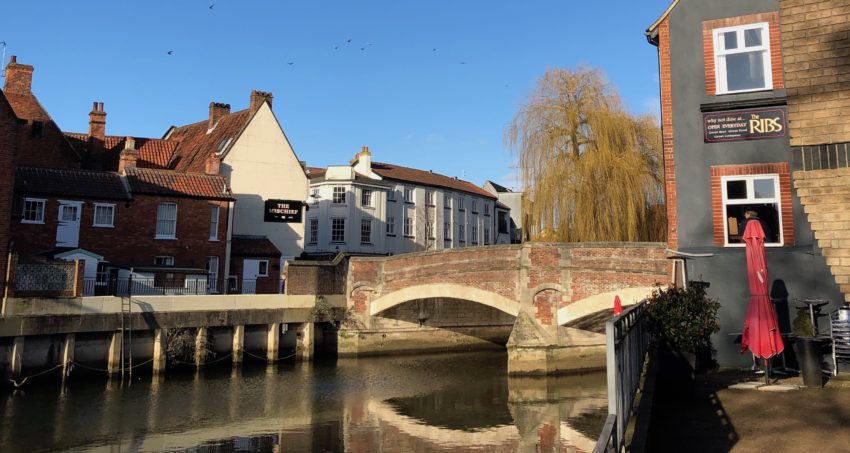Norwich was England’s second city in the distant past, back when East Anglia’s wool and agriculture powered the medieval economy. It may not play such a crucial role in the nation these days but Norwich makes up for it in character, history and charm.
I imagine it would’ve been low down on our list of staycation destinations were it not for the fact my family history connects me to Norfolk and its county town, and that I wanted to spend a day at the archives perusing ancient documents in search of more of my Stolliday, Wetherall and Green ancestors. Norwich turned out be not just the kind of city I enjoy visiting but one that at first glance I’d be more than happy to call home. And not even a violent winter storm put me off the place.
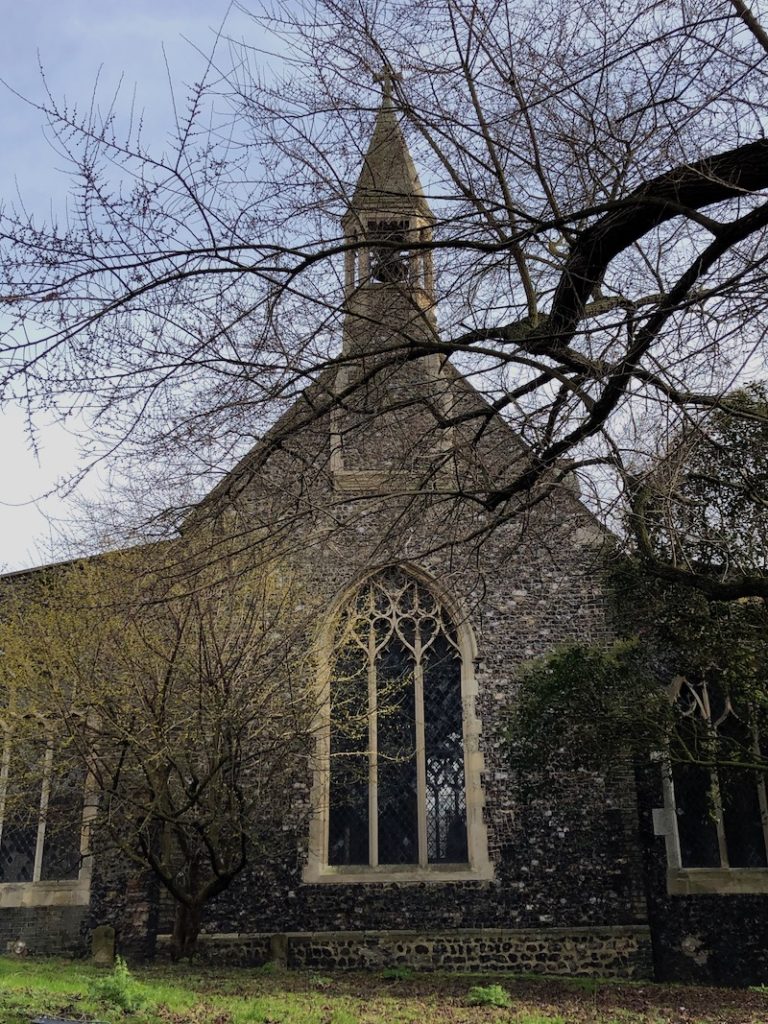
I find it compelling following in the footsteps of people who made me, seeing where they lived, the churches where the important milestones in their lives were celebrated – baptisms, marriages and funerals. And Norwich certainly has churches. In fact, I’ve never been anywhere with quite so many. Centuries ago the local worthies were throwing them up on any spare piece of city centre land they could find, to prove to their neighbours just how wealthy and pious they were. And if they weren’t doing that they were having an ale in one of the numerous pubs that filled any of the remaining gaps. I was particularly grateful for the latter when the rain came down and the winds blew up.
I spent the Friday at the archives before meeting up with Graham in the craft beer pub Brewdog, after he’d made the post-work two-hour train trip from London. We spent Saturday exploring the compact city centre on foot, criss-crossing the River Wensum, admiring Norwich’s glorious buildings as the sun shone brilliantly. We found a city of nooks and crannies, dark passageways, quaint courtyards and cobbled, narrow streets. Tudor, Georgian and Victorian buildings have survived in surprising numbers, despite the best efforts of Nazi bombers in World War Two and developers before and since, and some lean precariously like an old drunk. Here and there we stumbled across an old piece of city wall or a lump of masonry claiming to be part of an ancient church. It’s not unusual either to see a building with a thatched roof, and that’s rare in the modern English city centre. Most of the post-war architecture, however, is bland and predictable.
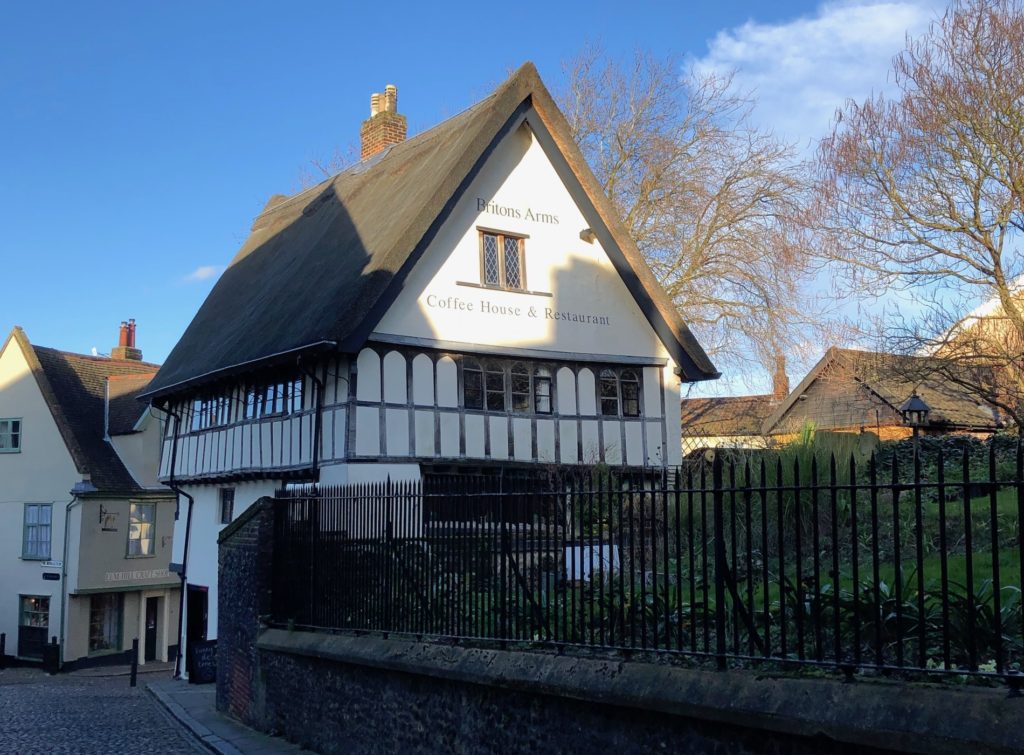
History is revealed in the street names and the use of the word ‘Plain’ to describe a small square or open space, of which Norwich has numerous examples. This comes from the word ‘Plein’, familiar in the Low Countries and proof of the trade links that linked Norwich to the continent centuries ago.
The city rotates around the magnificent Market Square, an epic space on a hill overlooked by the Germanic, 1930s City Hall and its splendid clock tower. The covered market, a mix of attractive foodie stalls and cheapo goods, takes up much of the square but there’s also the modern Forum, home to the library, the ancient Guildhall and St Peter’s Church. There’s also an entrance to the grand, art nouveau Royal Arcade and its shops.
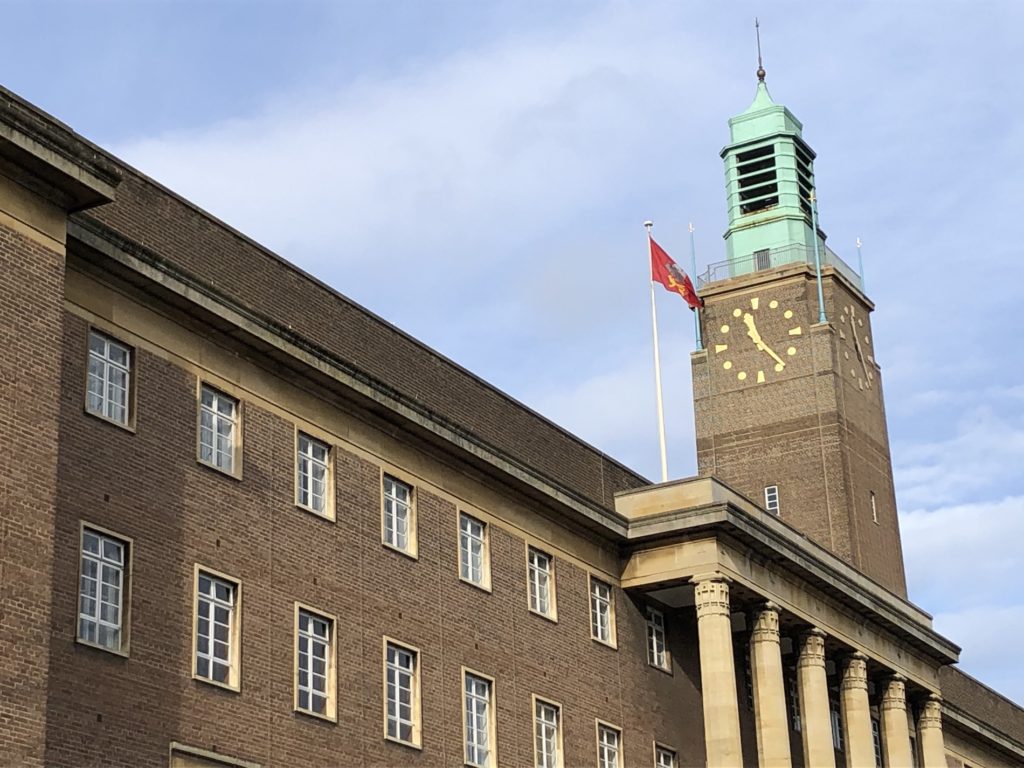
A hop, skip and a jump away is Pottergate, one of the survivors of old Norwich, a street of bars, restaurants, shops and the Belgian Monk pub. Here too is the old St Gregory’s Church, one of several now redundant churches that have found new life as an antiques market or arts centre. Their spires and towers punctuate the city, and they’re a reasonably varied collection of buildings, except that all are dressed in the flint one finds across Norwich as a building material.
The flint churches are mostly modest affairs, but Norwich Cathedral is grand indeed and sits in one of the country’s most attractive and historic cathedral closes. Dressed in warm stone and the final resting place of First World War heroine Edith Cavell, it has one of the tallest spires in England as well as one of the largest cloisters. We had a nose around, found no evidence of my ancestors but appreciated the peace before returning to the real world beyond.

Not surprisingly for Norwich there’s a redundant flint church over the road from the cathedral. Modest St Simon’s and St Jude’s Church crops up in my family history and stands at the bottom of one of Norwich’s biggest attractions, Elm Hill. This twee cobbled street is lined with some of the city’s most attractive and historic buildings, some dating from the 16th century, some of them home to antiques shops, cafes and gift shops. This is the Norwich my ancestors would’ve known, albeit without the neat and tidy 21st century gloss.
From the top of Elm Hill it’s but a short walk to Norwich Castle, built on a hill that towers over the city. There’s not a huge amount left of the Norman structure, which was founded not long after William of Normandy’s invasion of 1066, and the Keep has been repeatedly rebuilt and refaced, most recently in the 19th century. It looks impressive from the outside but it’s actually a bit of a shell and a disappointment. I wanted to visit because the castle was once the site of Norwich Prison, where distant ancestor Robert Stolladay was held before being transported to Australia for burglary. However, once again there’s little left of it to see. Most people visit the castle these days to tour the museum, which is one of those curious provincial collections without a compelling heart. There are paintings, teapots, bits of archaeology and numerous stuffed animals and it looks and feels a bit neglected and shambolic. We wandered around, then made our escape as soon as practically possible.
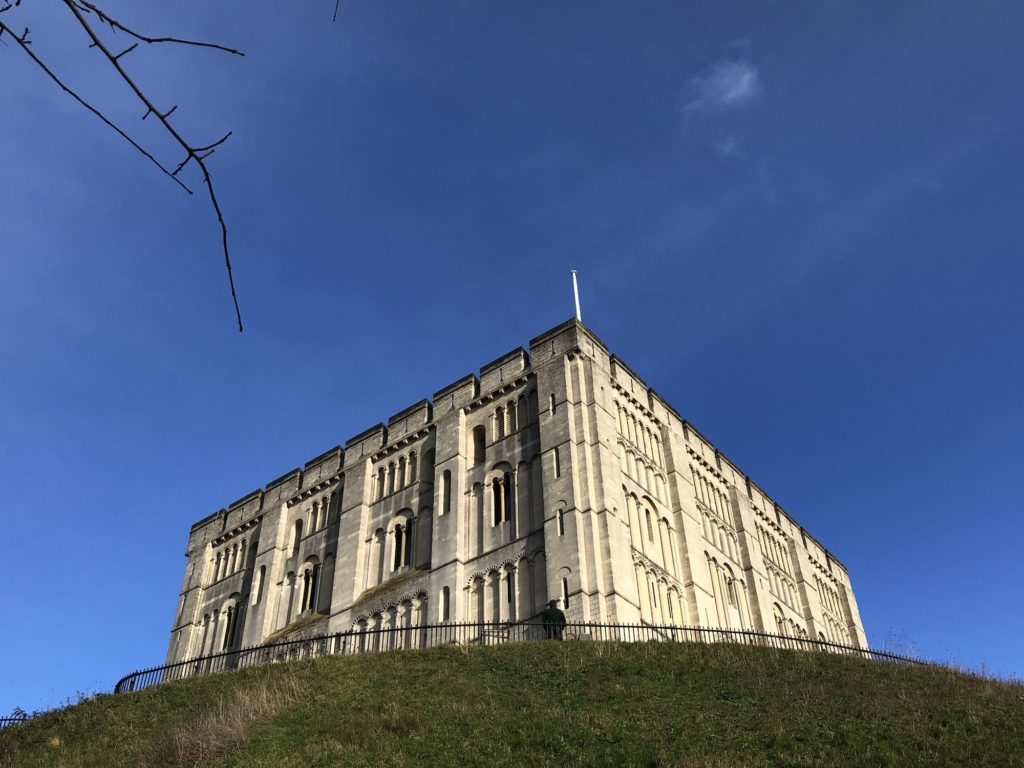
Sunday should’ve seen us on the train home but a winter storm threw our plans into chaos. The train got as far as Wymondham before fallen trees blocked its path, so we returned to Norwich, found a room in our second Premier Inn of the weekend and settled in for an extra day. Braving the gales we walked over the River Wensum to the north of the city, known as Norwich Over the Water. It might not be as characterful as the city centre but it has its fair share of historic buildings, churches, university buildings and shops. We found a few vast antiques markets and took refuge from the gales amid shelves of dusty reminders of the past.
The city’s main shopping streets were quiet, no doubt because most people had chosen to stay indoors on such a foul day. Not that I think they were missing too much for Norwich is much like any other English city when it comes to shopping – the same old chains and names. We had a quick look round the historic department store Jarrolds but then the rain really came down and it was time to take refuge in a pub.
We eventually made it home on Monday…

